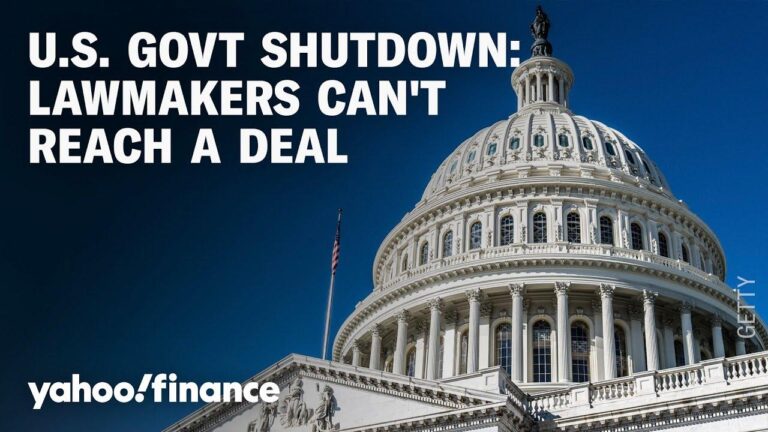The possibility of a US government shutdown has once again moved to the forefront of political discourse, raising urgent questions about its potential impacts. As negotiations over federal budget allocations stall, critical government functions risk disruption, affecting millions of Americans and global markets alike. This article explores what could happen during a government shutdown, examining the immediate consequences for public services, federal employees, and broader economic stability.
Impact on Federal Employees and Essential Services
Federal employees often face immediate and substantial disruptions during a government shutdown. Many are furloughed without pay, causing financial strain and uncertainty. However, a significant number classified as “essential” continue working without immediate compensation, often under increased pressure and stress. These workers provide critical services such as national security, public safety, and health programs, ensuring core government functions do not come to a halt amidst political deadlock.
The impact extends beyond employees to vital public services. Agencies responsible for airport security, law enforcement coordination, and emergency response maintain operations, but with reduced resources and staffing levels. Meanwhile, services such as national parks, visa processing, tax collection, and scientific research face partial or complete suspension, affecting millions of Americans and international visitors. Below is a snapshot of typical departmental responses during shutdowns:
| Department/Agency | Operations Status | Impact Highlights |
|---|---|---|
| Department of Homeland Security | Continues essential functions | Border security, TSA checkpoints open |
| National Parks Service | Most sites closed or limited | Visitor access restricted, maintenance halted |
| Internal Revenue Service (IRS) | Limited operations | Delayed tax refunds, paused audits |
| Food and Drug Administration (FDA) | Essential staff work | Drug approvals delayed, inspections reduced |
Consequences for Public Programs and National Security
Government shutdowns place immediate stress on essential public services, with numerous programs facing reduced funding or complete suspension. Critical social services, including food assistance programs and housing support, may experience delays or interruptions affecting millions of vulnerable Americans. Education grants and healthcare initiatives risk lagging behind, compounding challenges for families who depend on timely aid. The cumulative impact of these disruptions can ripple through communities, deepening socioeconomic inequalities.
National security concerns also escalate amid shutdowns. Key defense operations may continue but under constrained resources, straining the readiness of military personnel and delaying procurement or modernization projects. Intelligence agencies, while often partially funded, face limitations that hinder effective threat monitoring and counterintelligence. The table below highlights potential shutdown effects on different national departments:
| Department | Effect | Duration Impact |
|---|---|---|
| Defense | Limited operations, delayed training | Weeks to Months |
| Justice | Reduced law enforcement capacity | Days to Weeks |
| Homeland Security | Slower border processing, staffing shortages | Weeks |
| Public Health | Paused research, reduced emergency response | Weeks to Months |
- Essential programs may receive temporary exceptions but still operate with limited capacity.
- Non-essential staff face furlough, cutting workforce availability in critical sectors.
- Coordination between agencies can be hampered, weakening rapid response to emerging threats.
Economic Ramifications and Market Reactions
The immediate economic ripple effects of a US government shutdown are profound, hitting both domestic and global markets. Consumer confidence typically falters as federal services pause, with furloughed workers lacking paychecks to support spending. Businesses dependent on government contracts face delays, disrupting supply chains and investment plans. The stock markets often respond with heightened volatility, reflecting investor anxiety. Historically, periods of shutdown have seen stock dips averaging 1-3% within the first week, alongside a surge in volatility indices.
- Delayed government contracts impact construction and defense firms.
- Travel and tourism sectors suffer due to national park and monument closures.
- Securities markets experience increased sell-offs amid uncertainty.
| Economic Indicator | Typical Change During Shutdown | Market Reaction |
|---|---|---|
| Consumer Spending | Down by 1-2% | Reduced retail sales, slower growth |
| Stock Market | -1.5% to -3% | Increased volatility, risk aversion |
| Bond Yields | Fall moderately | Flight to safety toward Treasuries |
Global markets mirror these US trends, as the shutdown raises concerns about America’s economic stability and creditworthiness. Investors often move capital toward safe-haven assets like gold and government bonds. Currency markets can see the US dollar weaken temporarily against other major currencies due to fears of budgetary impasses. Furthermore, international trade partners may experience delays in customs and regulatory approvals, adding friction to global supply chains. The cumulative effect pressures policymakers to expedite negotiations, though prolonged stalemates could risk an extended slowdown and loss of market confidence.
How Citizens Can Prepare and What Authorities Recommend
Citizens are urged to take proactive steps to protect their financial and personal well-being amid the uncertainties surrounding a potential government shutdown. Ensuring a sufficient emergency fund can help cover essential expenses such as rent, utilities, and groceries if disruptions occur. Additionally, individuals should verify the status of government services they rely on, such as Social Security and Veterans Affairs benefits, since processing times may be delayed. Experts also recommend keeping updated on official announcements through reliable news sources to avoid misinformation.
Authorities have emphasized several practical measures for the public to minimize risk and confusion during the shutdown period. Key recommendations include:
- Avoid unnecessary travel, especially when services like passport processing or TSA security may be limited.
- Prepare for limited access to national parks, museums, and federal offices.
- Stay informed through official government channels for updates on reopening and emergency resources.
- Check with employers regarding pay and work expectations if you are a government employee or contractor.
| Recommended Preparation | Reason |
|---|---|
| Maintain at least one month of living expenses | Cover delayed income or benefits payments |
| Keep printed copies of important documents | Access essential info if digital systems are down |
| Monitor local news and official social media accounts | Receive timely updates on government operations |
In Summary
As the prospect of a US government shutdown looms, its potential impacts extend beyond federal employees to millions of Americans relying on government services. From halted public health programs to delayed financial aid, the consequences underscore the far-reaching effects of political impasses. While negotiations continue, the uncertainty serves as a reminder of the critical role government operations play in daily life and the urgency of resolving budgetary disputes to prevent widespread disruption. The coming days will reveal how lawmakers address this challenge and the scale of its impact on the nation.




